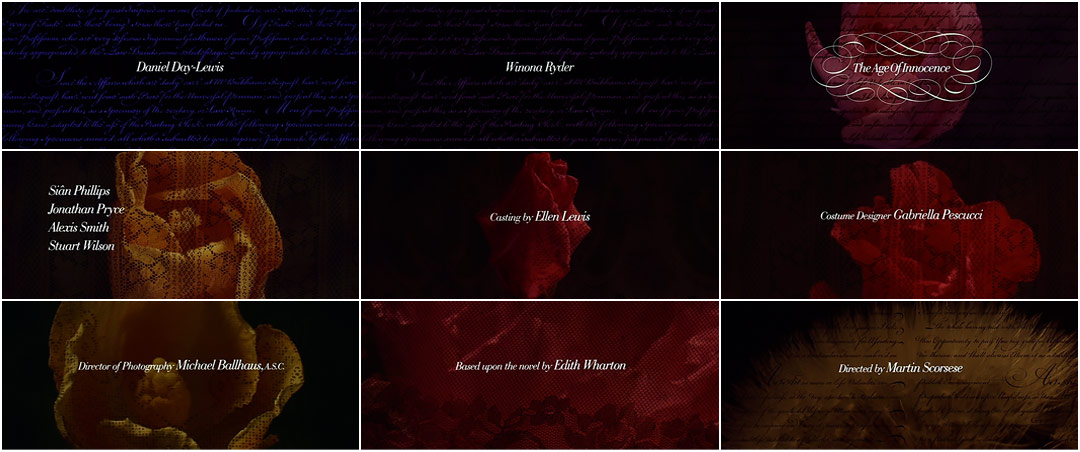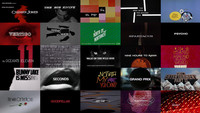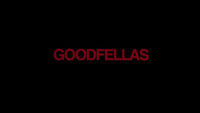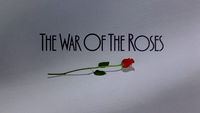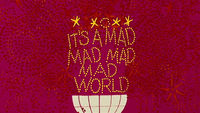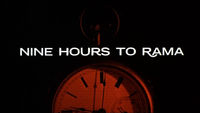Author Pat Kirkham discusses the opening titles for The Age of Innocence, designed by Saul and Elaine Bass, from her authoritative book Saul Bass: A Life in Film and Design.
The Age of Innocence is an adaptation of Edith Wharton's novel about life, manners and suppressed sexuality in late-nineteenth-century New York high society. In this tale of illicit love, Scorsese examines the paradoxes of an era where cruelty was cloaked in graciousness and eroticism was both restrained and heightened by elaborate codes of etiquette.
By the time Elaine and Saul came on board, Scorsese had already cut together several scenes, which he showed them on video. They reread the novel, read the script and decided to go for "a strong sensuality because it is a film about love, yearning, and suppressed desire." Elaine suggested using time-lapse photography of flowers unfolding and dissolving one into another and then overlaying the flowers with a delicate layer of lace and the beautiful calligraphic texts from etiquette books of the period."
Scorsese recalls first seeing it:
"Quite honestly, I'd never seen anything like it. I was stunned, because the whole movie was there. I said, 'This is better than the picture!' They achieve a certain beauty that I had hoped for, and also a certain unease. There is a slightly sinister quality to the underlying impact of the opening credits, a sense of conflict right from the beginning. It has the essence of the film — the longing, the hidden passion. The audience sees a flower, some lace, and some scripts, yet it feels like something is going to happen — and that's very delicate."
Saul explained:
"The title was deliberately ambiguous and metaphorical. The kinds of notions we had in mind involved an attempt to project the romantic aura of the period and still signal its submerged sensuality and hidden codes. The concept consists of a series of metaphorical layers. One layer is of lush time-lapse blossoming flowers evoking the romanticism of the Victorian period. Each starts as a closed bud and slowly and inexorably explodes to fill the screen.
The continuous series of long dissolves from flower to flower creates a sensuous overlay to the notion of Victorian innocence. The first flowers blossom slowly, sedately. As the dissolves progress, the tempo increases, resolving into an intense compressed montage of flower openings. To achieve this we optically double and triple-framed already highly overcranked footage and framed the flowers very tightly.
The superimposed lace patterns are another layer. When the flowers are closed, the lace is barely perceptible. But when the flowers open and fill the screen, the lace textures are fully revealed and become the filter through which we view the flowers. Another layer was the patterns of nineteenth-century calligraphy to augment the Victorian character and suggest the film's literary origin in Wharton's novel!"
Elaine's idea of cutting the title sequence to a passage from Charles Gounod's opera Faust (1859), which opens the film, worked so well that Scorsese and Elmer Bernstein, who was expecting to score the sequence, decided to retain it. The minor-key overture echoes the captive beauty of the flowers, and adds a layer of passion and obscure foreboding that provides the perfect transition into the story.
Pat Kirkham is Professor in the History of Design, Decorative Arts and Culture at the Bard Graduate Center for Studies in the Decorative Arts, Design & Culture, New York. She has written and edited a number of books, including Charles and Ray Eames (1998) and Women Designers in the USA 1900–2000 (2001).
©2011 Laurence King Publishing Ltd. Used with permission.
Title Sequence by: Elaine Bass, Saul Bass
Discover more Saul Bass
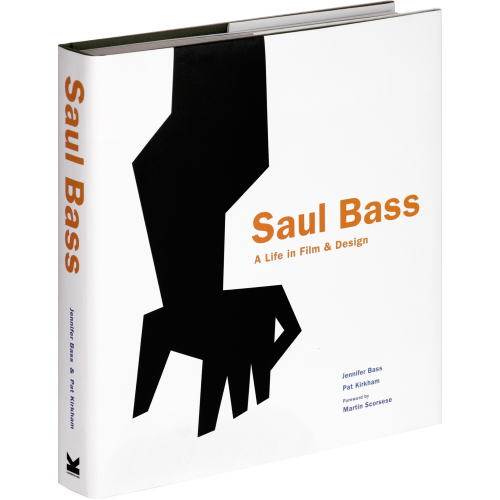
SAUL BASS: A LIFE IN FILM AND DESIGN
By Jennifer Bass and Pat Kirkham

